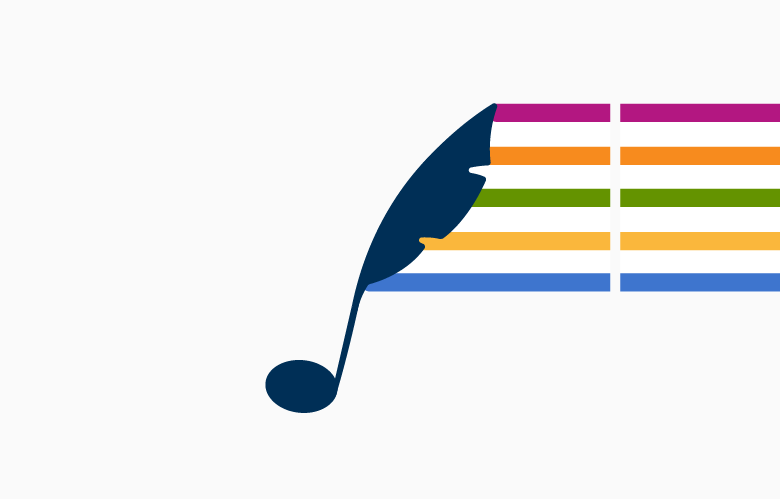The sources available for musicological research accumulate at an accelerated pace. And as they do, the ability to quickly identify and select what is most pertinent for a research project becomes paramount. Fortunately, there is a simple and robust tool that is particularly adept at isolating what is useful to researchers within this modern environment crowded with digital noise, a tool that makes a seemingly daunting process more manageable.
Enter the mighty abstract: the (often underappreciated) protagonist in music research that instantly, indefatigably, and incessantly shuttles musical ideas across vast regions to research communities worldwide. It is hard to overstate the value of a well-crafted abstract. Even the most compelling and well-publicized scholarship will likely fail to reach a broad audience without a concise conveyal of its most important ideas. Academic research is typically the result of a substantial investment in time, energy, and a multitude of resources. However, without reducing or sidelining in any way the importance of the project itself, be it a publication or a lecture, in reality, more people will read the abstract, as an initial point of entry, than experience the finished product.
“It is hard to overstate the value of a well-crafted abstract. Even the most compelling and well-publicized scholarship will likely fail to reach a broad audience without a concise conveyal of its most important ideas.”
“It is hard to overstate the value of a well-crafted abstract. Even the most compelling and well-publicized scholarship will likely fail to reach a broad audience without a concise conveyal of its most important ideas.”
Abstracts do a great deal of heavy lifting, particularly in the initial stages of a research project. As most music scholars know all too well, a captivating abstract can inspire and pique readers’ interests, resulting in presentations being chosen for conferences, book proposals being accepted by publishers, articles being selected for inclusion in periodicals, and program notes getting offered space to elucidate a performance. Despite its brevity, rather in great measure because of it, a well-constructed abstract is perhaps more effective than any other form of writing to express and share its author’s most innovative ideas.
Additionally, the benefits of becoming fluent with the techniques and rules for writing an effective abstract extend well beyond individual interest, achievement, or professional development. This skill brings value to the sphere of social good, equity, inclusion, and equality. When crafted well, an abstract’s valuable ideas stand a much better chance of becoming widely circulated, benefitting an extensive, truly global community of music researchers. In a global context where access to writings on music varies considerably across geographic regions, abstracts transcend such restrictions, traveling lighter to make the free-flowing exchange of ideas more equitable. Abstracts open doors and break barriers, and as one of the most powerful means available to communicate key concepts succinctly, their role in the research and publication process is essential and wide-reaching.
With this in mind, the following guidelines and examples, taken from Chapter 15 of the third edition of How to Write About Music: The RILM Manual of Style (2023), provides best practices, helpful approaches, clear examples, and missteps to avoid when writing an abstract, from the perspective of an organization that has consistently aimed to represent all the world’s music equally and equitably. From the staff working at the International Center in New York City to committee members located around the world, RILM’s collaborative, global network remains more committed than ever to the dissemination of music scholarship from every country. Since RILM’s focus is on music, the guidelines below are specifically suited for scholarship on this subject and related fields. However, it should be emphasized that, just as RILM has followed the discipline of musicology in becoming more and more interdisciplinary, many of the preferred conventions below will be appropriate (and even preferable) for other fields in the arts and humanities as well.
For more information and purchase options for the e-book How to Write About Music: The RILM Manual of Style, Third Edition, head to https://www.rilm.org/publications/publication-RilmManual/.
An abstract ought to convey every important aspect of the writing it describes. Nonessential matters should be omitted so as not to mislead the reader.
Do not spend too much time describing the item’s intellectual background; it is more important to deal with its content. If you are presenting new findings, concentrate on them and do not rehearse the known facts. State clearly the main conclusion or conclusions given in the item being abstracted (although not all research yields specific conclusions). Providing concrete information such as personal names, places, and names of organizations is always a desideratum as long as the item gives substantial information about them. If you are referring to a manuscript, give its present location (institution and complete shelf number). If you are referring to specific musical or scholarly works, give their full titles. If you are referring to one or more elements of a work, indicate where they are found in the longer work. Indicate the time period under discussion as precisely as possible. If you use unusual terms, define them. If you are dealing with pedagogy, indicate the level of education concerned.
Style
Avoid colloquial or informal language and write in complete sentences. Do not include personal views on the value of the item being abstracted. Many effective abstracts resemble a single well-shaped paragraph, with topic sentence, development, and conclusion. Writing in the voice of the author (declaratively) yields a more vivid abstract than does describing the author’s work and lends itself to specificity.
Checklist for abstractors
All abstracts should supply the following:
- First names of all authors, translators, collaborators, and subjects, except for very well-known persons.
- Complete titles of musical works in the original language, with index or opus numbers in their correct form. (Give original-language titles for works only when the work has a given title, however; see 10.2: Generic titles.)
- Complete names of all associations, societies, performing groups, religious bodies, and academic and government institutions in the language of their country.
- For manuscripts, location and shelf number, with RISM siglum for the library.
- Definitions of terms not in standard music reference works.
- Complete and correct place names in their appropriate historical form. Add current forms in parentheses when referring to an earlier time, e.g., Pressburg (now Bratislava).
- Basic bibliographic information (place and date of publication) for publications referred to.



